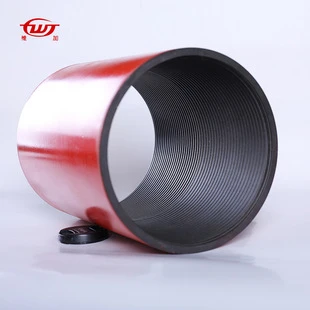- Afrikaans
- Albanian
- Amharic
- Arabic
- Armenian
- Azerbaijani
- Basque
- Belarusian
- Bengali
- Bosnian
- Bulgarian
- Catalan
- Cebuano
- Corsican
- Croatian
- Czech
- Danish
- Dutch
- English
- Esperanto
- Estonian
- Finnish
- French
- Frisian
- Galician
- Georgian
- German
- Greek
- Gujarati
- Haitian Creole
- hausa
- hawaiian
- Hebrew
- Hindi
- Miao
- Hungarian
- Icelandic
- igbo
- Indonesian
- irish
- Italian
- Japanese
- Javanese
- Kannada
- kazakh
- Khmer
- Rwandese
- Korean
- Kurdish
- Kyrgyz
- Lao
- Latin
- Latvian
- Lithuanian
- Luxembourgish
- Macedonian
- Malgashi
- Malay
- Malayalam
- Maltese
- Maori
- Marathi
- Mongolian
- Myanmar
- Nepali
- Norwegian
- Norwegian
- Occitan
- Pashto
- Persian
- Polish
- Portuguese
- Punjabi
- Romanian
- Russian
- Samoan
- Scottish Gaelic
- Serbian
- Sesotho
- Shona
- Sindhi
- Sinhala
- Slovak
- Slovenian
- Somali
- Spanish
- Sundanese
- Swahili
- Swedish
- Tagalog
- Tajik
- Tamil
- Tatar
- Telugu
- Thai
- Turkish
- Turkmen
- Ukrainian
- Urdu
- Uighur
- Uzbek
- Vietnamese
- Welsh
- Bantu
- Yiddish
- Yoruba
- Zulu
Compression Tubing Coupler for Efficient Fluid Transport and Connection Solutions
Understanding Compression Tubing Couplers An Essential Component in Fluid Systems
In various industries, the seamless transport of fluids is vital for operational efficiency, and one of the key components that facilitate this process is the compression tubing coupler. These fittings play a crucial role in connecting two sections of tubing securely, ensuring that the flow of liquids or gases is uninterrupted and leak-free.
What is a Compression Tubing Coupler?
A compression tubing coupler is a mechanical connector designed to join two pieces of tubing together, allowing for the safe transfer of fluids. Made from materials like brass, stainless steel, or plastic, these couplers are engineered to withstand high pressure and temperature variations, making them suitable for a wide range of applications. The design typically includes a nut and a ring or ferrule that, when tightened, compresses around the tubing to create a secure and impermeable seal.
The Working Mechanism
The operational principle of a compression tubing coupler is straightforward yet effective. When the nut of the coupler is tightened onto the tubing, the ferrule deforms to firmly grip the outer diameter of the tube. This deformation creates a tight seal that prevents leaks while maintaining the structural integrity of the tubing system. The beauty of this mechanism lies in its ability to be easily assembled and disassembled without damaging the tubing, making maintenance or replacement tasks significantly simpler.
Applications of Compression Tubing Couplers
compression tubing coupler

Compression tubing couplers are widely used across various sectors, including plumbing, gas distribution, automotive, aerospace, and industrial processes. In plumbing systems, they are crucial for joining pipes carrying water or gas, ensuring that connections remain secure under high pressure. In the automotive industry, they are often utilized in fuel and oil lines, where reliability is paramount. Additionally, in medical devices and laboratories, compression fittings ensure the safe transport of critical fluids without contamination.
Advantages of Using Compression Tubing Couplers
One of the major advantages of compression tubing couplers is their ability to provide a robust seal without requiring specialized tools for installation. This ease of use allows for quick assembly and disassembly, which is particularly beneficial in maintenance scenarios. Furthermore, since they can accommodate tubing made from various materials, they offer versatility in applications.
Another benefit is the reduced risk of leaks. The design of compression couplers minimizes the chances of fluid escaping from the joints, which is essential for ensuring safety in sensitive environments such as chemical processing or medical applications. Maintenance is also simplified; if a coupler needs to be replaced, it can typically be done without the need to cut or replace entire sections of tubing.
Conclusion
In conclusion, compression tubing couplers are integral to the functionality of fluid transport systems across many industries. Their design not only ensures secure connections but also supports efficient maintenance practices. Whether in a residential plumbing system or a high-tech industrial application, understanding the role and benefits of compression couplings is essential for anyone involved in the design or maintenance of fluid systems. As technology advances and industries evolve, the importance of reliable and efficient components like compression tubing couplers will continue to grow. Embracing these innovations can lead to enhanced performance, safety, and overall operational success.
-
Tubing Pup Joints: Essential Components for Oil and Gas OperationsNewsJul.10,2025
-
Pup Joints: Essential Components for Reliable Drilling OperationsNewsJul.10,2025
-
Pipe Couplings: Connecting Your World EfficientlyNewsJul.10,2025
-
Mastering Oilfield Operations with Quality Tubing and CasingNewsJul.10,2025
-
High-Quality Casing Couplings for Every NeedNewsJul.10,2025
-
Boost Your Drilling Efficiency with Premium Crossover Tools & Seating NipplesNewsJul.10,2025







